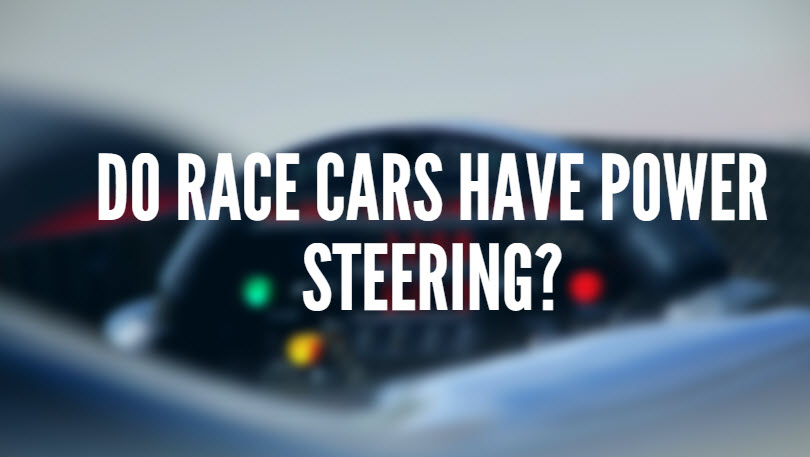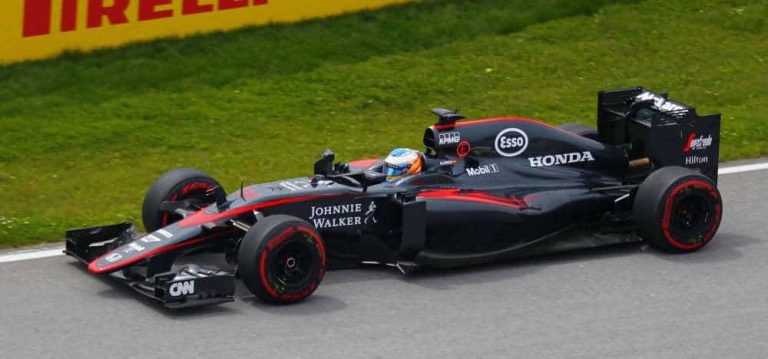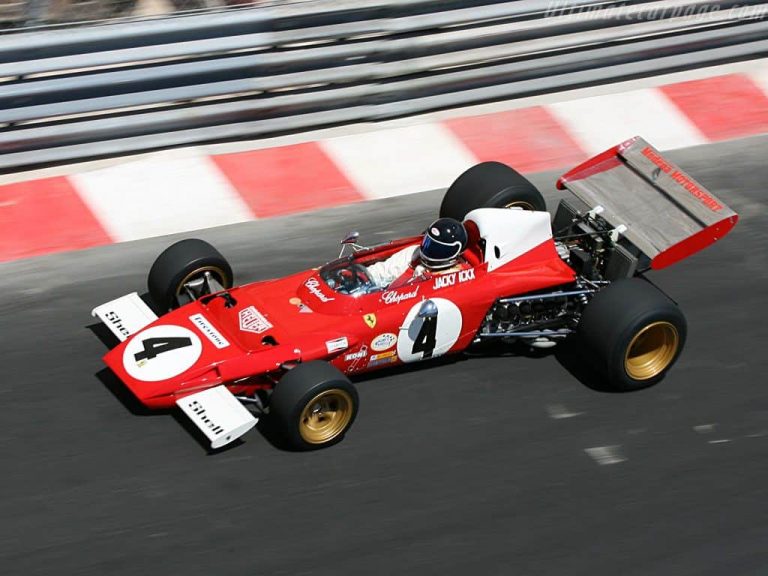Do Race Cars Have Power Steering?
Race cars are a lot of fun to watch. They have the fastest speeds, the most power, and all sorts of other features that make them exciting to drive. But how about steering? Do race cars have power steering, or do they just use their hands like any other car would? Well, it turns out that many race car drivers steer with both their hands and their feet!
Do Racing Cars Have Power Steering?
No. Power steering is not necessary in a race car but would also be dangerous if installed because it could potentially affect how well the driver can control their vehicle in extreme situations, such as high speed turns or sharp changes in direction. Race car drivers are significantly more skilled than most people who drive on the road, and are able to easily maneuver their cars without the additional assistance of power steering.
Power steering can be found in some vehicles on public roads because it makes driving easier for those who aren’t as skilled behind the wheel or want a less strenuous experience when they’re just commuting from home to work and back again every day. However, power steering is not necessary in a race car because the skills of the driver are directly related to their ability to use it correctly.
The best way for drivers to handle this type of situation on public roads is by using their feet and hands instead of relying solely on power steering, which can potentially be used as an excuse for some people who aren’t actually very good at driving to take more risks behind the wheel.
Do Formula One Race Cars have power steering?
Yes. The wheels on a race car are smaller than those found in normal cars, and the whole body of the car is lighter too. This makes it difficult for drivers to use their arms and shoulders to steer through corners because they tire easily. If you were driving these types of vehicles without any power steering, you would have a hard time turning the wheel.
Power Steering is not limited to Formula One vehicles though. All modern cars use this technology for safety and efficiency reasons. When it comes to choosing between power steering or manual drive, there are both advantages and disadvantages of each one that car enthusiasts need to consider before making a decision on which to purchase.
Does NASCAR Use Power Steering?
No. NASCAR does not use power steering, but there are other reasons why the cars have very little manual control or feel that they do. First off, let’s start with how this came about in the first place. If you go back to when racecar drivers were pushing themselves beyond their limits at high speeds on dirt tracks and road courses, then you’ll understand why racecars used to be so difficult for drivers.
If the driver made a mistake, he would lose control of his car and it could end up crashing or worse—the person could die! By taking away some of that manual control by using power steering, these issues were somewhat avoided.
While this definitely helped make racing safer, there were some downsides. Since racecars don’t have power steering, the driver has to rely on other skills such as driving with precision and learning how to get out of a bad situation (i.e., avoiding an obstacle). This is not only good for drivers but it also makes them better at their job because they learn more about how to handle a racecar.
Since power steering makes it easier to control the car, this would make racing less exciting for spectators. Racing is more fun when you have two drivers who are equally matched and able to push each other beyond their limits!
What about NASCAR? Well, they do use some of that technology but they keep most things the same as they are now. If you want to see how it’s done at its best, then watch any of the 24 Hours of Le Mans races!
Does Indycars have power steering?
No. Indycars do not have power steering, but there are other reasons why the cars have very little manual control or feel that they do. First off, let’s start with how this came about in the first place. If you go back to when racecar drivers were pushing themselves beyond their limits at high speeds on dirt tracks and road courses, then you’ll understand why racecars used to be so difficult for drivers.
If the driver made a mistake, he would lose control of his car and it could end up crashing or worse—the person could die! By taking away some of that manual control by using power steering, these issues were somewhat avoided.
While this definitely helped make racing safer, there were some downsides. Since racecars don’t have power steering, the driver has to rely on other skills such as driving with precision and learning how to get out of a bad situation (i.e., avoiding an obstacle). This is not only good for drivers but it also makes them better at their job because they learn more about how to handle a racecar.
Since power steering makes it easier to control the car, this would make racing less exciting for spectators. Racing is more fun when you have two drivers who are equally matched and able to push each other beyond their limits!
Who Needs All That Power Steering?
As you well know, race cars are designed to go really fast. They require a lot of power and strength to push through the races. So do they have power steering? Well, it depends on what kind of car we’re talking about here! Some smaller sports cars will come with some sort of assist for their drivers that helps them maneuver the car easier.
This is mostly done because the cars are very small and require a lot of concentration to drive them quickly, so it helps if there’s some sort of assist like this for the driver. But in most cases, no! Race cars don’t come with power steering at all. You can’t win at racing if you’re not strong enough to steer the car!
Types Of Power Steering Systems
There are a few different types of power steering systems you can have in your race car. Most cars today will either use a hydraulic system or an electric one, but there’s also the option to go for a rack and pinion setup as well. While all three options have their pros and cons, we’ll be focusing specifically on how they differ when it comes to steering.
Electric power-assisted steering (EPAS)
EPAS uses an electronic sensor to monitor the motion of the road wheels, which calculates how much assistance should be applied at any given time.
Electric power steering systems are generally more efficient than hydraulic ones, and their sensors can communicate with other vehicle electronics such as the anti-lock braking system (ABS), electronic stability control (ESC) and even airbags. However, since they’re not directly powered by the engine – via a belt or gearbox – electric power steering systems can take longer to activate, which some drivers find disconcerting.
Hydraulic power steering systems
These are powered directly by the engine via a belt or gearbox and so they require no additional electronics in the car. They’re more common on larger vehicles where their greater assistance is required at lower speeds – for example small cars with EPAS are generally only equipped with power steering at the very lowest speeds.
Hydraulic systems are more responsive than electric ones, but since they’re connected to the engine by a belt or gearbox there is some delay in their response time – this can make them feel slightly less direct and engaging for drivers who like instant feedback from their car.
Electrically Variable Gear Ratio Power Steering Systems
EVGPS systems are similar to EPAS in that they use an electric motor instead of a hydraulic pump. The motor is connected to the steering rack, which can then vary its gear ratio based on how much assistance it needs at any given time – rather than having just two fixed ratios like most power steering systems.
However unlike EPAS cars that have a fixed ratio the steering rack of an EVGPS car constantly varies its gear ratio based on input from sensors that monitor road speed, lateral acceleration and other factors. This means they can provide more assistance at low speeds – where it’s most needed – and less as you go faster so they’re not constantly pushing your hands left and right as you go around corners.
As well as making steering easier they make the car more stable at higher speeds, which is why many manufacturers are now fitting them to performance models like sports cars where there’s less need for heavy power assistance but greater sensitivity required during cornering.
Electric Power Assisted Steering Systems
The first use of an electric power-assisted steering system in a race car was not actually for the purpose of helping out drivers, but to help avoid accidents. It wasn’t until 1954 that Jaguar introduced the fully powered race cars with driver assistance devices like power assisted brakes and even power assisted steering systems. As time went on, power steering systems got more and better as engineers continued to improve them for racing purposes.
Power Assisted Steering Systems for Race Cars: How Racing Technology Changed the Industry Forever | By now, it is no secret that race cars have some of the most advanced technology out there. Whether its titanium rods or carbon fiber materials in their bodies, race cars will never cease to amaze us with their high-tech features. However, there is one technology that we always wonder about: power assisted steering systems for race car.
Did you know? The first use of an electric power-assisted steering system in a race car was not actually for the purpose of helping out drivers, but to help avoid accidents. It wasn’t until 1954 that Jaguar introduced the fully powered race cars with driver assistance devices like power assisted brakes and even power assisted steering systems. As time went on, power steering systems got more and better as engineers continued to improve them for racing purposes.
Bottom Line
As you can see, race cars do not have power steering. It is typically used only in certain types of vehicles that are made for specific purposes. Race cars are definitely not the same as your standard car. They pose some challenges for those new to racing, however, they can be a lot of fun once you know what you’re doing!
As I mentioned before, race cars do have power steering and it’s usually turned off because if it was on then the wheel would turn by itself. This is also why the power steering in a standard car doesn’t work when you remove it.







